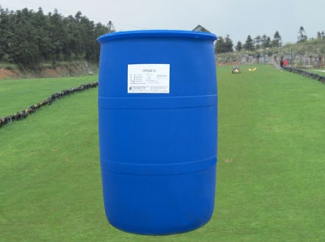In the process of synthesis and production of APG surfactant, dealcoholization is a key step in industrial production. Due to the high boiling point of higher alcohols used in APG synthesis, it is very difficult to remove them. To ensure that the alcohol content in the product is less than 1%, ordinary vacuum distillation equipment is used, and the low temperature can not meet the requirements, while the high temperature will make the temperature sensitive main product APG disproportionation condensation, and the quality can not meet the requirements. As an effective separation method for high boiling point and heat sensitive materials, molecular distillation technology has the characteristics of lower distillation temperature than the boiling point of materials, lower distillation pressure, shorter heating time and higher degree of separation, which can solve a large number of problems that can not be solved by conventional distillation technology.
Therefore, using molecular distillation technology to produce APG, the alcohol can be separated in a very high vacuum and a very short time, so as to obtain light color and stable quality products. At present, molecular distillation technology has been successfully applied to the industrial production of high quality alkyl polyglycosides.

APG mixtures with different components such as alkyl glucosides and alkyl oligoglycosides were prepared by the reaction of carbohydrates with long chain fatty alcohols. The characteristic of this method is that the transesterification step is omitted and the process is simple, but the reaction conditions such as temperature, catalyst dosage and alcohol sugar ratio must be strictly controlled.
Preparation example: add 72g dodecanol, 36g glucose and 0.2g catalyst p-toluenesulfonic acid into a 500ml four port flask equipped with stirrer, thermometer, dropping funnel and water separation device with reflux condenser, slowly raise the temperature to 70 ℃ with nitrogen, start stirring and raise the temperature to 110 ℃, drop 79g glucose, 60g n-butanol and 0.3g catalyst. The reaction was maintained at reflux temperature for 3 h. Continue to heat and steam out n-butanol, stop heating when there is no obvious distillate in the system, and stop stirring when the temperature drops to 50 ℃. And then vacuum dealcoholization, light yellow alkyl polyglycosides. Butanol is used as water carrying agent and solvent. The water produced in the reaction is carried out by the mutual solubility of butanol and water. Butanol is also a good solvent for glucose.